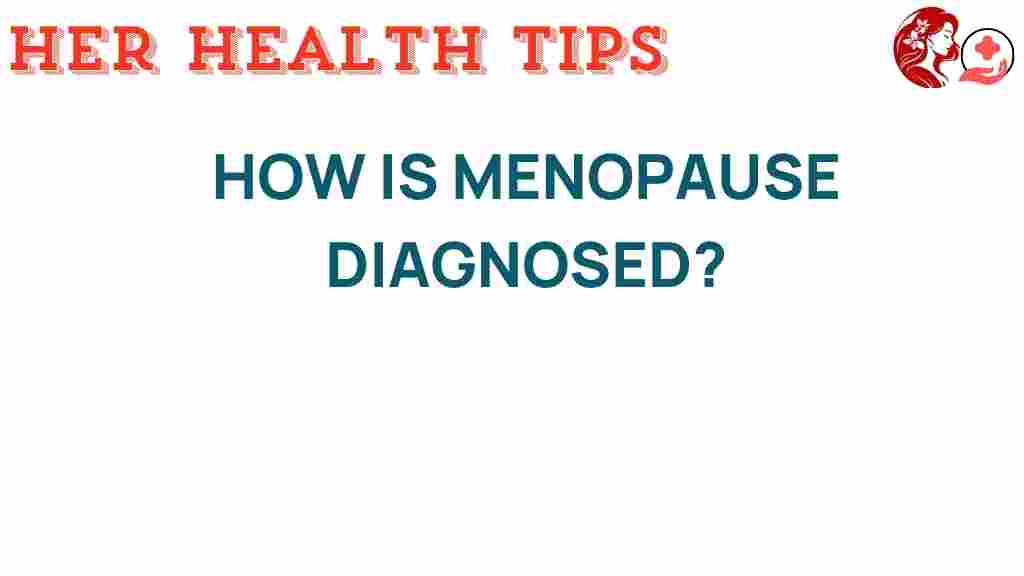Unraveling the Mystery: How is Menopause Diagnosed?
Menopause is a significant phase in a woman’s life, marking the end of her reproductive years. As women age, they undergo various hormonal changes that can lead to a range of symptoms, making the diagnosis of menopause an important aspect of women’s health. Understanding how menopause is diagnosed helps women navigate this natural transition with confidence and awareness.
Understanding Menopause
Menopause typically occurs between the ages of 45 and 55, though the precise timing can vary widely among individuals. This stage is characterized by the cessation of menstrual periods for 12 consecutive months, signaling the end of a woman’s ability to conceive. The hormonal changes associated with menopause can result in numerous symptoms that affect physical, emotional, and mental well-being.
Common Symptoms of Menopause
Before diving into the diagnosis, it’s essential to recognize the common symptoms associated with menopause. These symptoms can vary in intensity and duration:
- Irregular periods
- Hot flashes and night sweats
- Sleep disturbances
- Mood swings and irritability
- Vaginal dryness
- Decreased libido
- Weight gain
- Thinning hair and dry skin
These symptoms can significantly impact a woman’s quality of life, making it crucial to seek a proper diagnosis and management strategies.
The Diagnosis of Menopause
Diagnosing menopause involves several steps that healthcare professionals utilize to assess a woman’s health status. The process typically includes a detailed medical history, physical examination, and, in some cases, laboratory tests.
Step 1: Medical History Review
The first step in diagnosing menopause is a comprehensive medical history review. Your healthcare provider will ask about:
- Your menstrual cycle patterns
- Any recent changes in your symptoms
- Your family history of menopause
- Current medications and health conditions
Understanding your personal and family history can provide valuable insights into your health and help in identifying age-related changes associated with menopause.
Step 2: Physical Examination
A medical examination is often the next step. During this examination, your healthcare provider may:
- Assess your overall health and any existing medical conditions
- Conduct a pelvic examination to check for any abnormalities
- Discuss your symptoms and how they affect your daily life
This examination helps rule out other potential health issues that might mimic menopause symptoms.
Step 3: Laboratory Tests
Although menopause is primarily diagnosed based on symptoms and medical history, laboratory tests may be used in some cases. These may include:
- Hormone level tests: Blood tests can measure levels of hormones such as estrogen, follicle-stimulating hormone (FSH), and luteinizing hormone (LH). Elevated FSH levels can indicate that a woman is nearing menopause.
- Thyroid function tests: Since thyroid disorders can cause symptoms similar to menopause, testing thyroid hormone levels may be necessary.
- Bone density tests: Women undergoing menopause are at increased risk for osteoporosis, so a bone density test may be recommended to assess bone health.
These tests help healthcare providers confirm the diagnosis and tailor appropriate management strategies.
Step 4: Tracking Symptoms
Tracking your symptoms over time can also be an invaluable tool in diagnosing menopause. Keeping a symptom diary can help you and your healthcare provider identify patterns and changes in your symptoms, making it easier to establish a diagnosis.
Troubleshooting Common Concerns
Women often have questions and concerns during the menopause transition. Here are some common troubleshooting tips:
1. What if my symptoms are mild?
If your symptoms are mild, monitoring them may be all that’s necessary. Lifestyle changes such as regular exercise, a balanced diet, and stress management can often help alleviate symptoms.
2. When should I seek medical advice?
Consider consulting your healthcare provider if:
- Your symptoms interfere with daily activities
- You experience heavy bleeding or prolonged periods
- You have concerns about osteoporosis or heart health
3. Are there treatments available?
Yes, various treatments can help manage menopause symptoms. Options include:
- Hormone Replacement Therapy (HRT): This can help alleviate many symptoms by restoring hormonal balance.
- Non-hormonal medications: Certain antidepressants and medications for blood pressure can also help with symptoms.
- Natural remedies: Some women find relief through herbal supplements, though it’s essential to consult with a healthcare provider before starting any new treatment.
Conclusion
Understanding how menopause is diagnosed is crucial for women navigating this natural transition. With the right knowledge and support from healthcare professionals, women can manage symptoms effectively and maintain their quality of life during this significant stage. If you suspect you may be experiencing menopause, don’t hesitate to reach out to a healthcare provider specializing in gynecology and women’s health. Early diagnosis and proactive management can make all the difference.
For additional information on menopause and its management, you can check resources like the North American Menopause Society.
This article is in the category Reproductive and created by HerHealthTips Team
